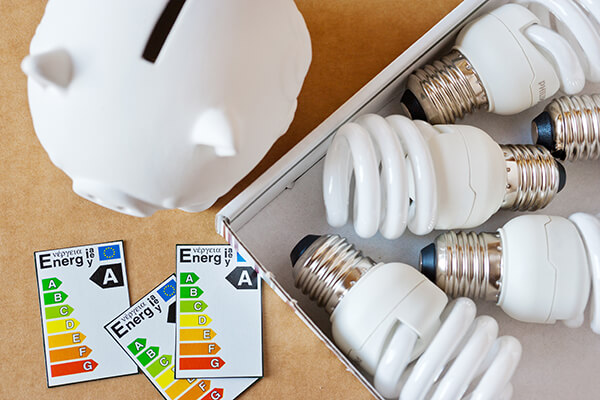When shopping for a new home, the importance of finding energy efficient digs might be high on the list. Energy efficiency helps reduce the amount of energy you use in your home and in turn can reduce your energy bills as well as your home’s environmental impact. But there are options for energy efficiency beyond a roof covered in solar panels — and could lead to a higher resale value, too.
According to the U.S. Department of Energy (DOE), there are a host of things to consider for an energy efficient home.
- Energy-reducing appliances and electronics
The easiest way to identify energy efficient appliances is with the Energy Star logo. The Energy Star signifier is bestowed upon appliances and electronics that are meaningfully more energy efficient than the government standard. Energy Star-branded refrigerators, dishwashers, washers and dryers as well as air conditioners, televisions and heating units can all increase the efficiency of your home. For example, an Energy Star washer alone can save you $70 a year in utility bills. Plus, you’ll use 10 fewer gallons of water.
- Insulation and temperature control for heating and cooling
The DOE found 56 percent of home energy costs go to heating and cooling. Spray foam insulation can help reduce the amount of lost heat or cooling by filling in holes in attics, near wiring, behind small walls, in basements and around plumbing vents. You can also save by using a digitally programmable thermostat to bring down expenses and keep homes efficient. The DOE found homes saved up to 15 percent by dialing thermostats back as little as 10 to 15 degrees during the average 8-hour workday.
- Water heating
After heating and cooling your home, your water heater can be another large cost, accounting for as much as 18 percent of your utility bill. After the basics – repairing leaks and updating pipes – be sure to buy an energy-efficient model heater and set your heater to 120 degrees Fahrenheit. This temperature should give you comfortably warm water for most uses within your home. Draining water from the heater can also remove build up to help it run more efficiently.
- Lighting
Burning an incandescent bulb costs between five and ten times more than the purchase price of the bulb. Energy-efficient lighting like Light Emitting Diode (LED) or Compact Fluorescent Light (CFL) bulbs can transform energy usage in your home. Both LED and CFL lights can last ten times as long as incandescent bulbs and use less than half the energy.

